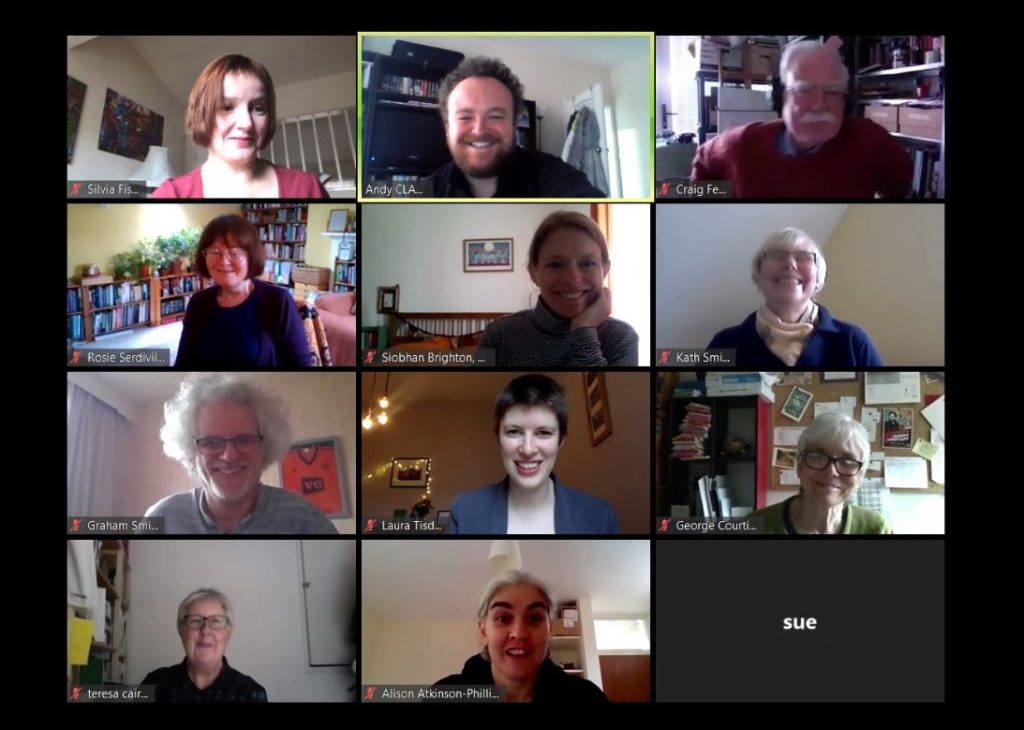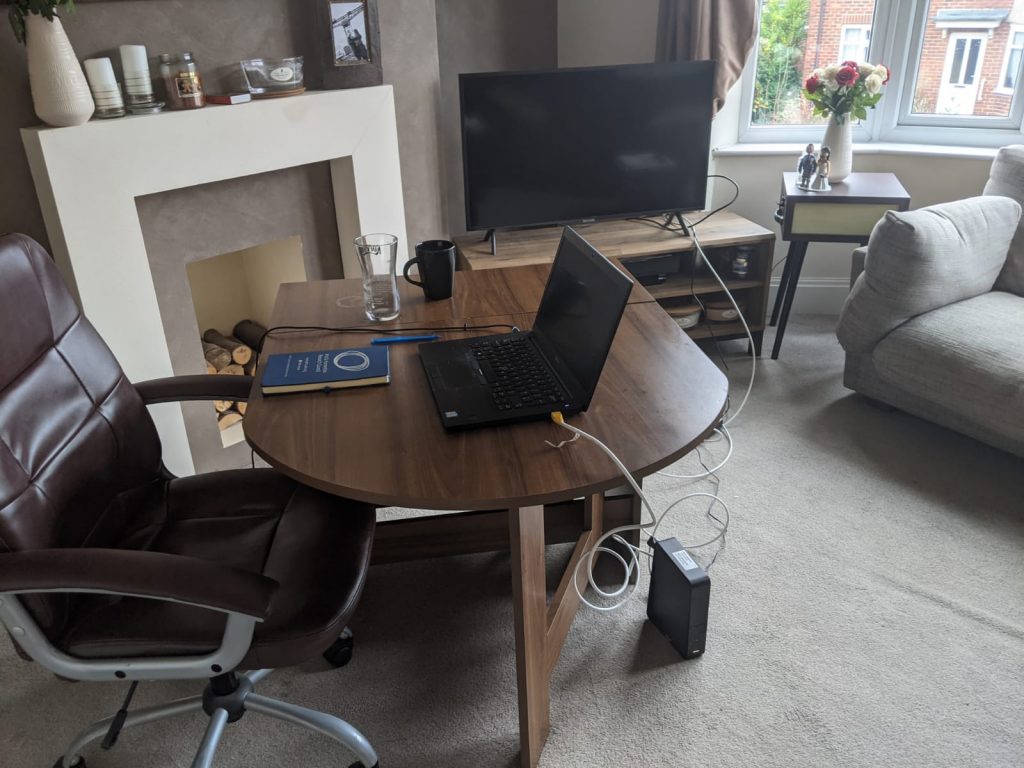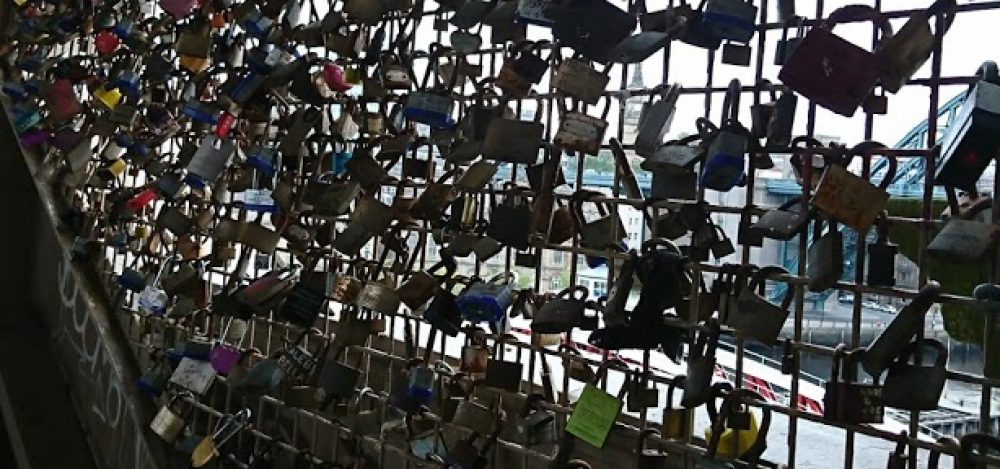Over the last several months, oral historians have been acclimatising to remote interviewing in response to the Covid-19 pandemic. This shift for many (but not all) has led to a range of new methodological questions. In this Lug piece, Andy Clark reflects on the different nature of silence in remote interactions as compared with in-person encounters. Drawing on experience of both personal and professional remote conversations, he asks whether the changing dynamic of silence could have an impacts on the nature of the materials that we collect during the pandemic. Please feel free to join in the discussion using the comments section below.
Silence.
It’s such an interesting phenomenon that’s been theorised and discussed at length, not only in oral history but across the humanities and social sciences. Silences can often tell us as much about the memory of events and experiences as oral narratives can. In recognition of this, there is an extensive literature within oral history research that discusses silences in terms of ‘what is not said’ and what has not been remembered or narrated (for an overview, see Passerini’s excellent 2017 article here)
In this post, my focus is on silence as an aspect of human interaction, and the different ways that silences are experienced. This discussion is – inevitably – in response to the Covid-19 pandemic, lockdown, and the massive changes to social interaction.
My thoughts started percolating following our workshop on oral history and the pandemic that we hosted on November 27th. I began thinking more deeply about my own experiences and how they chimed with the points raised throughout the day. When I conducted my next remote interview, I became acutely aware of the changing role and experience of silence when compared with my previous, ‘normal’, face-to-face conversations.
But it wasn’t during an oral history interview that I started thinking about silences in remote conversations. Rather, it was during a Zoom catch-up with my wife’s family. We have tried to get together once a month online, usually involving nine people logging on from four households to have a catch-up, a drink, and undertake the ‘zoom quizzes’ which became highly popular during lockdown. In these ‘meetings’, as the night progressed and we ran out of things to talk about, silence would descend on us like an uncomfortable shadow. The conversation was drying up and we were all left sitting awkwardly staring at one another on screen, willing (praying) for someone to say something, for a new topic to emerge. When that didn’t happen, we’d begin to make our excuses and leave the call.
This situation struck me as odd. For years, family parties with the same group had gone on for hours on end, often ending only when the sun came up and the last of the booze had been emptied. When we shifted to Zoom, there was a notable limit to our interaction, normally no more than three hours.
The reason for this, in my view, is that in-person silence is a normal part of comfortable engagement, whereas remote silences can be hugely uncomfortable. Silence is an oppressor to be stymied. When you sit in the company of people you’re familiar with, periods of silence often go completely unnoticed. I’d imagine that most people have sat in the company of family and friends when nothing is said for a prolonged period, but are able to enjoy one another’s company regardless. Indeed, sitting in silence is often representative of enjoying a high level of ease as opposed to an awkwardness. There is no ‘need’ to speak constantly, as simply being in the same space is enjoyable.

When interacting remotely, however, silence becomes oppressive. Any remote interaction – be it online or telephone – is a more transactional encounter than when we’re sitting in the same space. It is call and response, question and answer, listen and reply. When there are no more transactions, the medium of remote conversation can give a sense of discomfort, and the feeling that the transaction has been completed and the interaction should end.
Rather than comfortable familiarity, conversing remotely takes on the feeling of a first date – you feel the need to maintain conversation, ensure the other person is engaged at all times, and avoid awkward silences as much as possible.
Since returning to remote interviewing in the last week, I have increasingly noticed this similar experience when speaking with respondents. Allowing interviewees the space to be silent is an incredibly comforting part of the oral history interview, for all parties involved. It is an important aspect of our practise that comes with experience. Knowing when to probe further and when to allow for silent reflection. We become aware of body language cues that indicate whether our interviewee has finished speaking, or they are pausing and enjoying the silence to compose their narrative and make sense of their history. Or even if they’re simply looking at something that’s caught their eye, or having a breather – silences are a fundamental part of the interaction in an oral history interview, and add to the comfort and enjoyment of those involved. As practitioners, we utilise all of our senses in the in-person interview to gauge these nuances and respond accordingly.

In my experience of conducting interviews over Zoom or Teams, when an interviewee has become silent I’ve had the same oppressive feeling that I have when talking with family. Why have they gone quiet? Should I say something? Are they going to continue? Has their computer frozen? Has MY computer frozen? Are they waiting for me to move on? Are they wondering why the hell I’m staring at them and not saying anything? Am I merely talking aimlessly into the ether? Are they? And would either of us bloody know? And then, to compound the problem, you catch a glimpse of your own mini-video and notice you look awkward as well as feeling it.
Thus far, the silence usually ends with me spluttering in to say something, to say anything, to end its oppression. But this change in interaction creates a very different type of interview than those I conducted pre-Covid. They’re shorter, much more pointed and direct, and there is less time for me and interviewees to embrace and enjoy moments of comfortable silence.
I don’t know if these dynamics are only applicable to me. Having had some discussions with other members of the Newcastle Collective, I do think that the issue of silence in the remote interview is one that requires more thought and attention as the Covid situation continues to develop and we (hopefully) enter the last stretch of the pandemic. It would be great if this initial post could open up further conversations among the oral history community to ascertain if these experiences are more common. Underneath, I’ve pasted some questions that colleagues in the collective raised when I first sent this post for feedback. What do you think? Please use the comments section below to offer your insights, or contact us at oralhistory@newcastle.ac.uk.
——————————————————————————————————————-
Questions arising from within the Newcastle Oral History Collective:
– Do we fear silence online in situations where we embrace it in person? And if so, why?
– Drawing out your comparison between the family dynamic and the remote interviews – how does the experience differ according to whether you have prior familiarity with the interviewee?
– Does it make a difference if we ‘acknowledge’ the weirdness of remote interviewing at the outset? Or are we so used to Zoom/Teams etc. by this stage that the ‘new normal’ no longer gets remarked upon?
– Do we become more comfortable with time and more practice?
– Do we simply accept these feelings of discomfort and keep on longing for f2f to return, or do we (need to) change our practice?

I think it is a very interesting consideration. Silence is indeed an important part of communication and we do often sadly succumb to our own discomfort and often fill those apparent ‘gaps’ unnecessarily. I think it is important to try as far as we can to resist the temptation to talk over those silences, both in person and online.
I think we tend to feel more uncomfortable with online silences because the very act of being ‘online’ is task focussed. We are connected online ‘for a reason’. We have a specific purpose for being there. There are very few distractions and we are almost ‘forced’ to look each other in the eye. In f2f interviews I am able to adjust my body language and body position to foster a mutual sense of comfort and to be less ‘direct’ with my approach. We can be flexible f2f, we can more easily read signs in the other person (are they tiring? have they had enough?). Online we may struggle to read these intimate cues.
I also imagine that we may be conscious of potential interference in sound quality/transference online – wondering ‘did they say something?’ Worried that we may have missed something they said.
I think it is useful to attempt to adjust our level of comfort with online interviews. As well as making the interviews more achievable throughout this pandemic, the online interview opens us up to opportunities to interview others in other areas, parts of the country, or other countries. Using this method of interviewing we may be able to access people in remote or restricted areas. We may be able to use online technology to interview those that have communication difficulties. We can offer a more accessible, flexible and inclusive approach to interviewing.